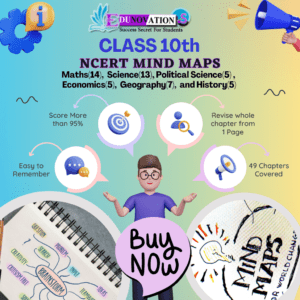Scientists reveal the human brain information speed limit at over 10 bits per second, reshaping how we understand conscious vs. unconscious movement.
The Hidden Speed of Thought: Human Brain Information Speed Limit Uncovered
In a groundbreaking study published by researchers at Princeton University in Nature Neuroscience, scientists have successfully measured the human brain information speed limit, calculating how fast we can consciously process and act on information. Contrary to the widespread myth that our brains are unfathomably fast, the actual rate at which we consciously perceive and process information clocks in at around 10 bits per second. While the number might seem underwhelming at first glance, the findings offer profound implications for neuroscience, artificial intelligence, and human-machine interfaces.
What Does “10 Bits per Second” Mean?
The human brain information speed limit refers to the rate at which the central nervous system (CNS) can transform external stimuli into consciously controlled physical movements. This is not about reflexes or subconscious responses; rather, it’s about volitional, real-time decision-making. The study measured how much information the brain needs to control a cursor through a maze-like task, a process involving active visual tracking and decision-making.
Dr. Reza Shadmehr, a neuroscientist unaffiliated with the study, commented:
“This research elegantly quantifies the brain’s conscious decision bandwidth and pushes us to rethink how we engineer machines to interact with humans.”
Shadmehr is a Professor of Biomedical Engineering at Johns Hopkins University and has written extensively on motor control and information theory in neuroscience.
Conscious vs. Unconscious Movement Info Throughput
One of the major takeaways is the contrast between conscious and unconscious movement info throughput. While conscious control is slow and deliberate—limited to around 10.4 bits/sec—unconscious movement processing operates at much higher speeds, often without the need for our awareness. This dual-processing model resembles how a computer runs background tasks while a user interfaces with the main screen.
- Conscious control = deliberate thinking (slow)
- Unconscious control = reflexive, rapid (fast)
This real-time movement brain bandwidth difference has implications for understanding sports performance, driving reactions, surgical precision, and even how we train AI systems to interpret human actions.
CNS Information Processing Rate and Why It Matters
The CNS information processing rate gives insight into the biological limits of attention and control. If we are to improve performance—whether in learning, athletics, or interface design—knowing the CNS bottleneck allows for optimization. The researchers used a clever experimental design where participants had to track a moving dot and predict its path, while a control system tracked their hand movements to isolate decision-making speed from physical motion.
Here’s a breakdown of the methodology:
- Participants: 18 individuals
- Task: Moving a cursor to avoid an obstacle
- Measurements: Real-time decisions, not physical delay
- Result: Conscious decisions averaged 10.4 bits/s
Toppers Use Mind Maps to score more than 95%
-
NCERT Class 11th Commerce Mind Maps
Add to cartOriginal price was: ₹999.00.₹199.00Current price is: ₹199.00. -
NCERT Class 12th Chemistry Mind Maps
Add to cartOriginal price was: ₹199.00.₹75.00Current price is: ₹75.00. -
NCERT Class 12th Commerce Mind Maps
Add to cartOriginal price was: ₹999.00.₹199.00Current price is: ₹199.00. -
NCERT Class 12th Science Mind Maps
Add to cartOriginal price was: ₹999.00.₹199.00Current price is: ₹199.00. -
NCERT Mind Maps For Class 10th
Add to cartOriginal price was: ₹999.00.₹199.00Current price is: ₹199.00.
Purchase Today
Real-World Application
Understanding the brain processes over 10 bits per second provides real-world insights into multiple sectors:
1. Neurorehabilitation
Knowing the speed of conscious control can help design rehabilitation protocols for stroke patients by adjusting task complexity and decision requirements.
2. Human-Machine Interfaces
From gaming to aviation, human-in-the-loop systems need tuning to account for our actual processing speeds.
3. AI Design
Neural networks modeled after the human brain must consider not just biological architecture but also information throughput limits.
How This Changes Our View of Intelligence
Traditionally, intelligence has been viewed in terms of IQ scores or problem-solving speed. However, this research introduces a neurometric dimension—a measurable physical speed of conscious cognition. This may pave the way for diagnostics in neurodegenerative diseases, where reduced real-time movement brain bandwidth could serve as an early biomarker.
Additional Context and Expert Insight
Neurologist Dr. Lisa Feldman Barrett notes:
“The brain is not a supercomputer—it trades off speed for accuracy, energy, and biological constraints. These findings reinforce that reality.”
Barrett is a distinguished professor at Northeastern University and author of How Emotions Are Made.
The study has also drawn the attention of researchers in the fields of cybernetics and robotics, where modeling human information limits helps fine-tune prosthetic limbs and autonomous assistants.
Related Resources for Deeper Understanding
For readers eager to dive deeper into neuroscience or cognitive processing topics, explore these educational resources:
- ✅ NCERT Courses
- 📚 Download NCERT PDFs
- 🧠 NCERT Mind Maps
- 📝 Current Affairs
- 🎥 Video Lessons
- 🧾 Syllabus Reference
- ❓ MCQs for Practice
- 📒 Notes Repository
For schools or institutions wanting a digital upgrade, consult Mart India Infotech for custom website solutions.
Cite this article
Sauerbrei, B.A., Pruszynski, J.A. The brain works at more than 10 bits per second. Nat Neurosci (2025). https://doi.org/10.1038/s41593-025-01997-0
- Published13 June 2025
- DOIhttps://doi.org/10.1038/s41593-025-01997-0
Subjects
10 FAQs on Brain’s Information Processing Rate
1. What is the human brain information speed limit?
It is the measured rate at which the human brain can consciously process and act on information, estimated at about 10 bits per second.
2. How does unconscious movement info throughput differ?
Unconscious movements are faster and more efficient as they bypass deliberate, conscious processing pathways.
3. How is the brain’s information speed measured?
Using behavioral tracking tasks and mathematical models rooted in information theory.
4. Why does the CNS information processing rate matter?
It reveals our biological limitations in processing real-time sensory and decision-making tasks.
5. Can the human brain process more than 10 bits per second unconsciously?
Yes, unconscious systems like reflexes and muscle memory operate much faster.
6. What is real-time movement brain bandwidth?
It refers to the brain’s capacity to process and respond to motion-related data in real-time.
7. How does this research help AI development?
By modeling human speed limits, AI can be trained to interact with humans more intuitively.
8. What implications does this have for education or learning?
Instructional design can be improved by understanding the processing limits of learners.
9. Could brain info speed become a medical diagnostic tool?
Potentially yes, especially in detecting early signs of cognitive decline or neurodegeneration.
10. How can I learn more about neuroscience topics like this?
Explore Edunovations Courses and NCERT Videos for curated educational material.
Final Thoughts
The discovery of the human brain information speed limit may feel like it contradicts our perceptions of intelligence and rapid thinking. But in reality, it underscores how optimized and energy-efficient our brains are. Understanding this biological threshold opens up new frontiers in everything from assistive tech to psychological testing and beyond.





